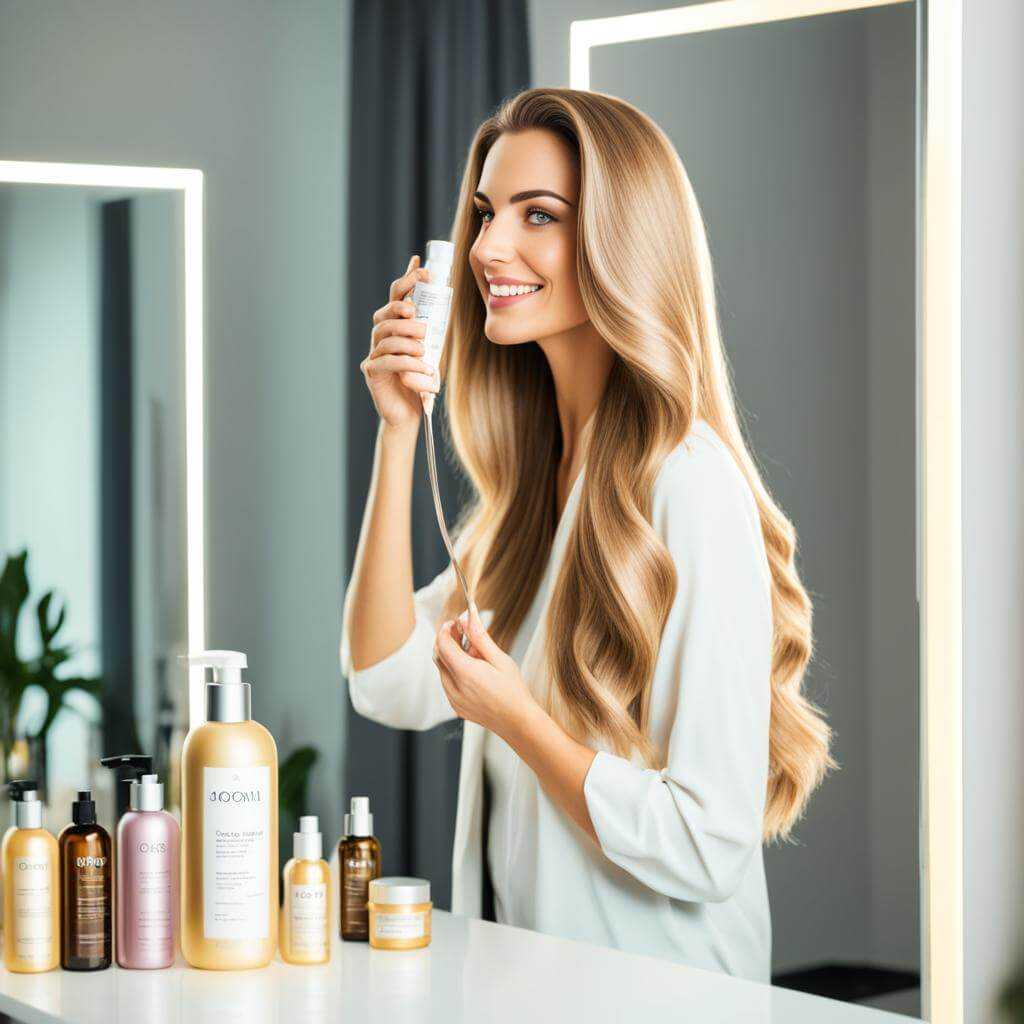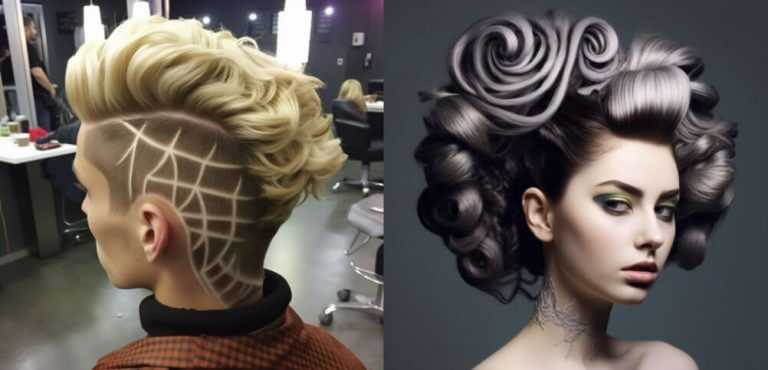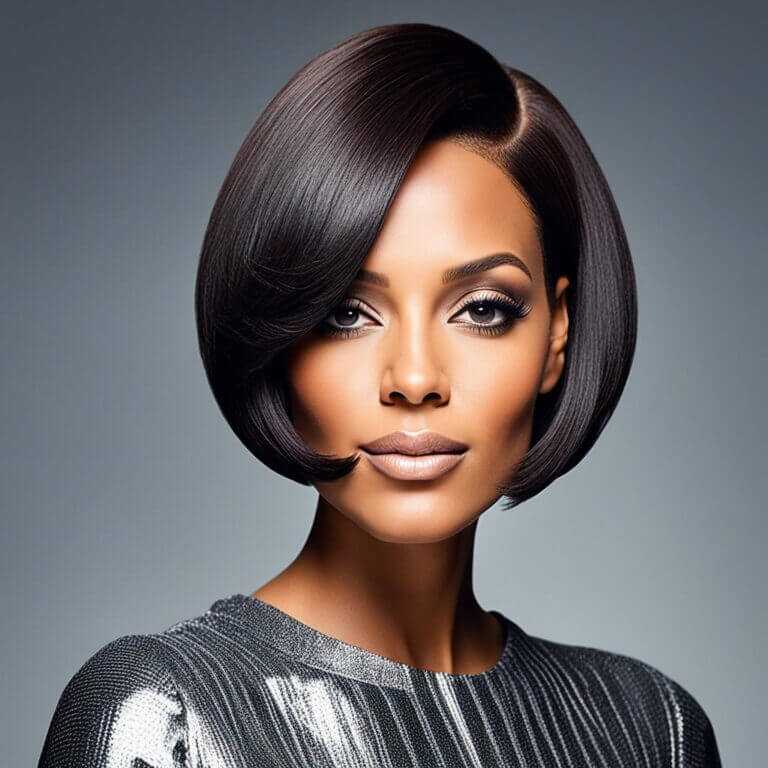5 tips on how to maintain healthy hair
Discover the best hair care secrets! Follow our top 5 tips for maintaining healthy hair and flaunt your natural shine and strength every day.
Maintaining healthy hair is a goal for many people. We all desire strong, shiny, and natural hair that exudes vitality. Fortunately, there are several simple tips you can incorporate into your hair care routine to achieve and maintain the best hair health possible.
Key Takeaways:
- Wash your hair less often to maintain oil balance and use dry shampoo between washes
- Apply conditioner properly to hydrate your hair without drying out your scalp and choose the right conditioner for your hair type
- Incorporate a hair mask into your routine at least once a week for deep moisturizing and strength
- Protect your hair when using heat styling tools by using moisturizing protectants and leave-in hair masks
- Minimize hair processing such as dyeing, perming, or relaxing and give your hair time to rest and recover between treatments
Wash Your Hair Less Often
When it comes to keeping your hair healthy and vibrant, one of the most important practices is to wash it less frequently. Over-shampooing can strip away the natural oils that your hair needs, leaving it looking dull and lifeless. To maintain the oil balance of your hair, it’s recommended to wash it a few times per week.
By reducing the frequency of shampooing, you allow your hair’s natural oils to nourish and protect your strands. This oil balance is essential for maintaining healthy hair, as it helps to keep your scalp moisturized and your hair follicles in good condition.
But what about those days when your hair needs a quick refresh? This is where dry shampoo comes to the rescue. Dry shampoo is a convenient and effective alternative to traditional washing. It absorbs excess oils and impurities, leaving your hair looking refreshed and voluminous.
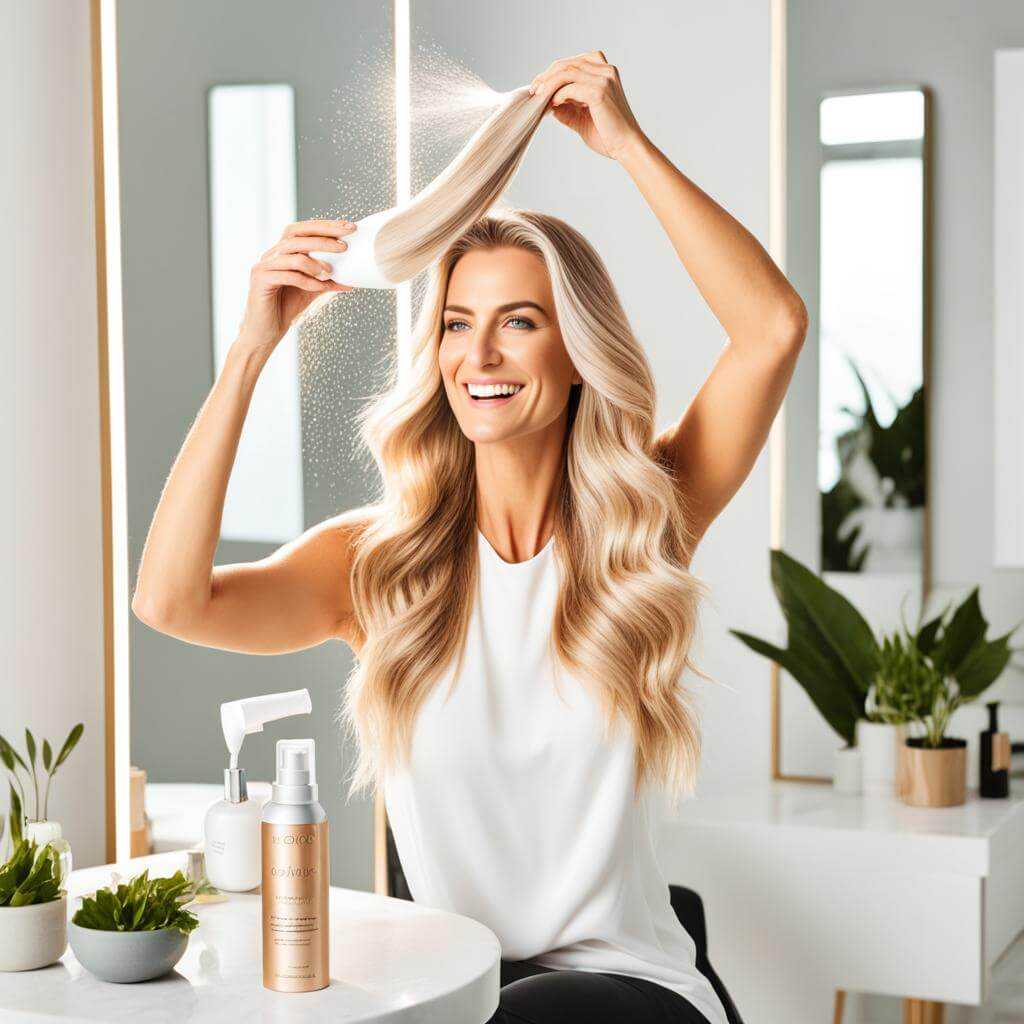
Using dry shampoo between washes not only helps prolong the time between shampoos but also adds texture and volume to your hair. It’s a great option for busy individuals or those who want to extend the life of their hairstyles.
Remember, the key to maintaining healthy hair is finding the right balance. Avoid over-shampooing, and let your hair’s natural oils work their magic. When you need a quick pick-me-up, reach for a dry shampoo that suits your hair type and enjoy the benefits of fresh, revitalized locks.
Apply Conditioner Properly
Proper application of conditioner plays a crucial role in hydration and maintaining a healthy scalp based on your individual hair type. To ensure that your hair receives the moisture it needs without drying out your scalp, follow these steps:
- Start by wetting your hair thoroughly in the shower.
- Apply a small amount of conditioner to the palm of your hand. The amount needed may vary depending on your hair length and density.
- Begin by applying the conditioner to the mid-lengths and ends of your hair. These areas tend to be drier and require more hydration.
- Gently work the conditioner through the strands of your hair, using your fingers or a wide-toothed comb. This helps distribute the product evenly and ensures thorough coverage.
- Once the mid-lengths and ends are sufficiently coated, gently massage the remaining conditioner into your scalp. This step helps moisturize the scalp without weighing it down.
- Leave the conditioner on for the specified amount of time indicated on the product label. This will allow the formula to deeply penetrate and nourish your hair.
- Rinse your hair thoroughly with lukewarm water, ensuring that there is no residue left behind.
Remember, choosing the right conditioner for your specific hair type is essential. Whether you have fine, oily hair or thick, dry hair, there are conditioners formulated to meet your unique needs. Look for products that offer added hydration benefits, such as those containing ingredients like shea butter, jojoba oil, or argan oil. Tailoring your conditioner choice to your hair type can help optimize its effectiveness and enhance your overall hair health.

Applying conditioner properly not only provides hydration to your strands but also ensures a healthy scalp. Remember to focus on the mid-lengths and ends of your hair, then work your way toward the roots. By following this technique and selecting the right conditioner for your hair type, you can achieve beautifully hydrated hair and a nourished scalp.
Use a Hair Mask Weekly
When it comes to maintaining healthy and beautiful hair, incorporating a hair mask into your routine can make a world of difference. Hair masks are deep moisturizing treatments that penetrate the hair shaft, providing much-needed hydration and strength. By using a hair mask at least once a week, you can keep your hair supple, shiny, and strong.
Unlike regular conditioners, hair masks are designed to provide intense hydration and nourishment to your strands. They contain high concentrations of moisturizing ingredients that can deeply penetrate and restore your hair’s health from within. Whether you have dry, damaged, or frizzy hair, a hair mask can work wonders in improving its overall condition.
Using a hair mask is easy and can be a relaxing self-care ritual. After shampooing your hair, apply the hair mask generously from roots to ends. Gently massage it into your hair and leave it on for the recommended time stated on the product label. This allows the mask to deeply penetrate and work its magic.
Choosing the Right Hair Mask
When selecting a hair mask, it’s essential to consider your hair type and specific concerns. Look for masks that are formulated to address your hair’s needs, such as moisturizing masks for dry hair or repair masks for damaged hair. Additionally, check the product’s ingredients to ensure it contains nourishing oils, proteins, and vitamins that promote hair health.
Remember to follow the instructions on the packaging and adjust the frequency of use based on your hair’s needs. While using a hair mask once a week is a good starting point, you can adjust it to more or less frequent based on how your hair responds. Overdoing it can sometimes lead to over-moisturization, which may result in greasy or weighed-down hair.
Incorporating a hair mask into your regular hair care routine will help in keeping your hair well-hydrated, moisturized, and nourished. Over time, you’ll notice improvements in its overall health, including increased shine, reduced frizz, and enhanced manageability.
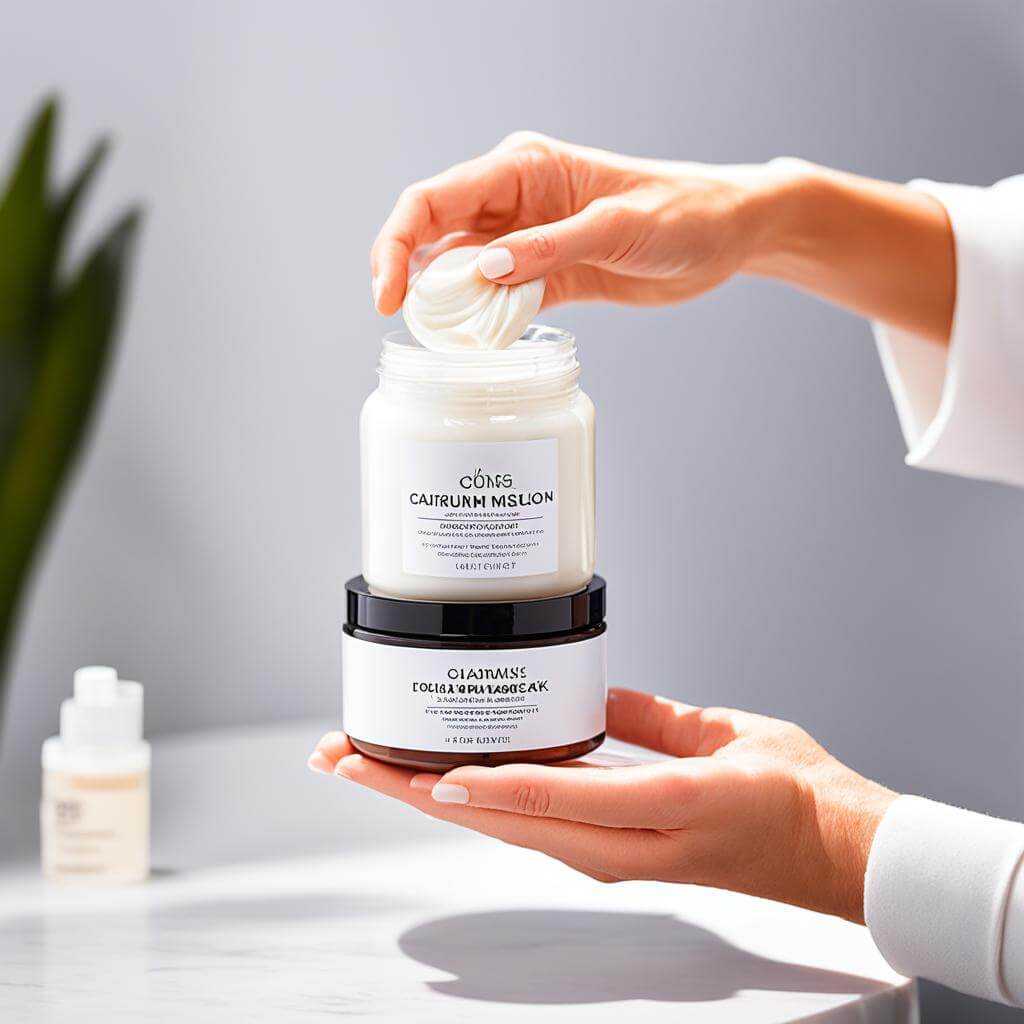
| Benefits of Using Hair Masks | How to Use a Hair Mask |
|---|---|
| – Provides deep hydration | – Shampoo your hair |
| – Strengthens hair strands | – Apply the hair mask |
| – Improves hair texture and shine | – Massage it into your hair |
| – Reduces frizz and flyaways | – Leave it on for recommended time |
| – Repairs damaged hair | – Rinse thoroughly |
Using a hair mask weekly is a simple yet effective way to give your hair the extra care it deserves. Whether you’re dealing with dryness, damage, or simply want to maintain the health of your locks, a hair mask can be a game-changer in your hair care routine.
Protect Hair When Heat Styling
When it comes to heat styling, it’s important to take measures to protect your hair from damage. Excessive use of blowouts and hot irons can leave your hair dry, brittle, and prone to breakage. However, with a few simple precautions, you can minimize the negative effects of heat styling and keep your hair healthy.
Reduce Heat Styling Frequency
One of the best ways to protect your hair is to reduce the frequency of blowouts and hot iron use. Limiting the amount of heat you expose your hair to can help prevent damage and preserve its health. Instead of relying on heat styling every day, consider embracing your natural hair texture or opt for heat-free hairstyles that don’t require hot tools.
Use a Moisturizing Protectant
Before applying heat to your hair, it’s crucial to use a heat protectant spray or serum. These products create a barrier between your hair and the heat source, reducing the amount of damage caused by high temperatures. Look for a protectant that offers moisturizing properties to keep your hair hydrated and supple during the styling process.
Consider Leave-in Hair Masks
Leave-in hair masks can be a great addition to your heat styling routine. These masks provide deep conditioning and protection, helping to prevent heat-related damage. Look for leave-in masks that specifically mention heat protection in their formulation. They can offer an extra layer of defense against the damaging effects of heat styling.
Expert Tip
Remember that heat styling should always be done with caution. Be sure to use heat tools on the lowest possible setting to minimize damage. Also, try to give your hair periodic breaks from heat styling to allow it to recover and rejuvenate.
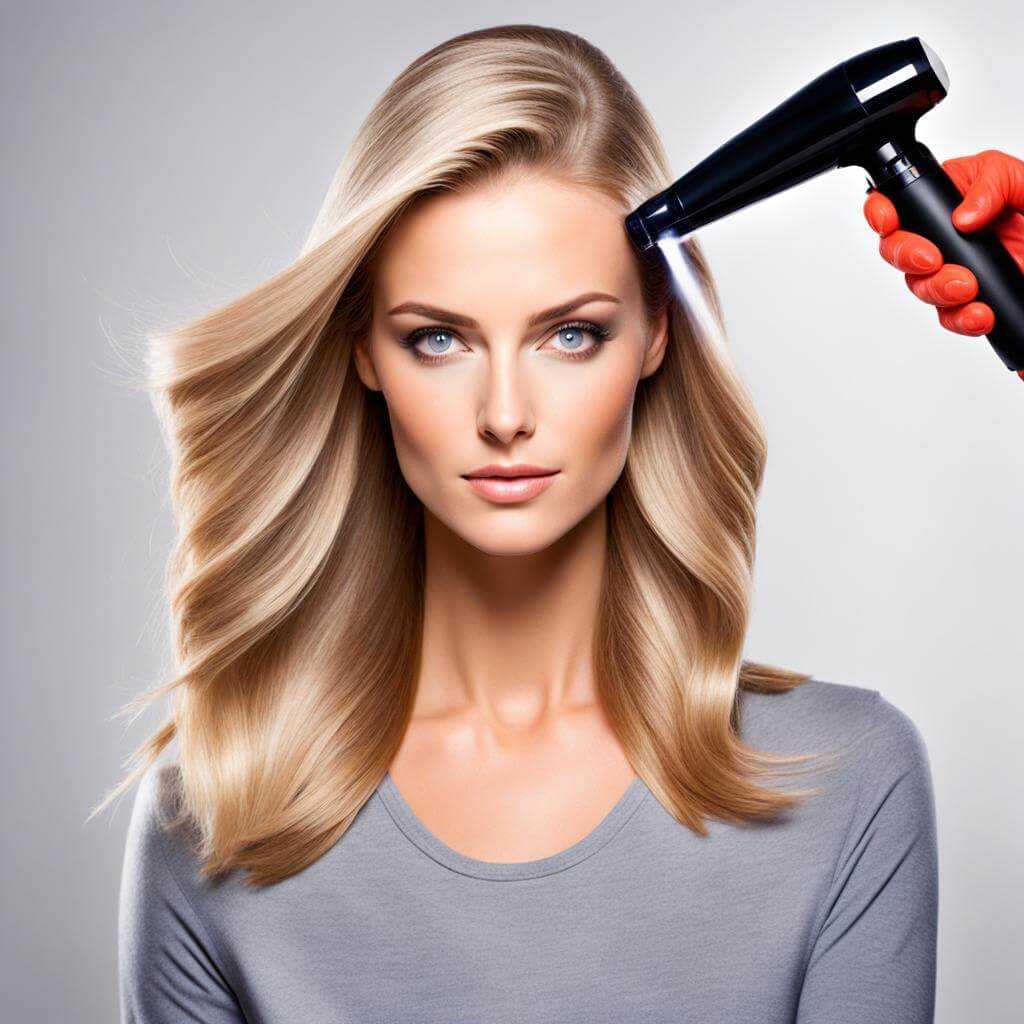
By adopting these protective measures, you can enjoy the benefits of heat styling without compromising the health of your hair. Remember to reduce the frequency, use a moisturizing protectant, and consider incorporating leave-in hair masks into your routine. With these precautions in place, you can rock your favorite hairstyles while keeping your hair healthy and beautiful.
Minimize Hair Processing
Excessive hair processing, such as hair dye, hair perms, and hair relaxers, can lead to damage and dryness. It is important to give your hair time to rest and recover between treatments to maintain its health and vitality.
Chemically treated hair is particularly vulnerable, as these processes can weaken the hair shaft and strip it of its natural moisture. To counteract the effects of hair processing, it is essential to incorporate a hair mask into your routine.
A hair mask is a deep conditioning treatment that can provide essential hydration and nourishment to chemically treated hair. By using a hair mask regularly, you can help repair and strengthen your hair, minimizing the damage caused by hair dye, hair perms, and hair relaxers.
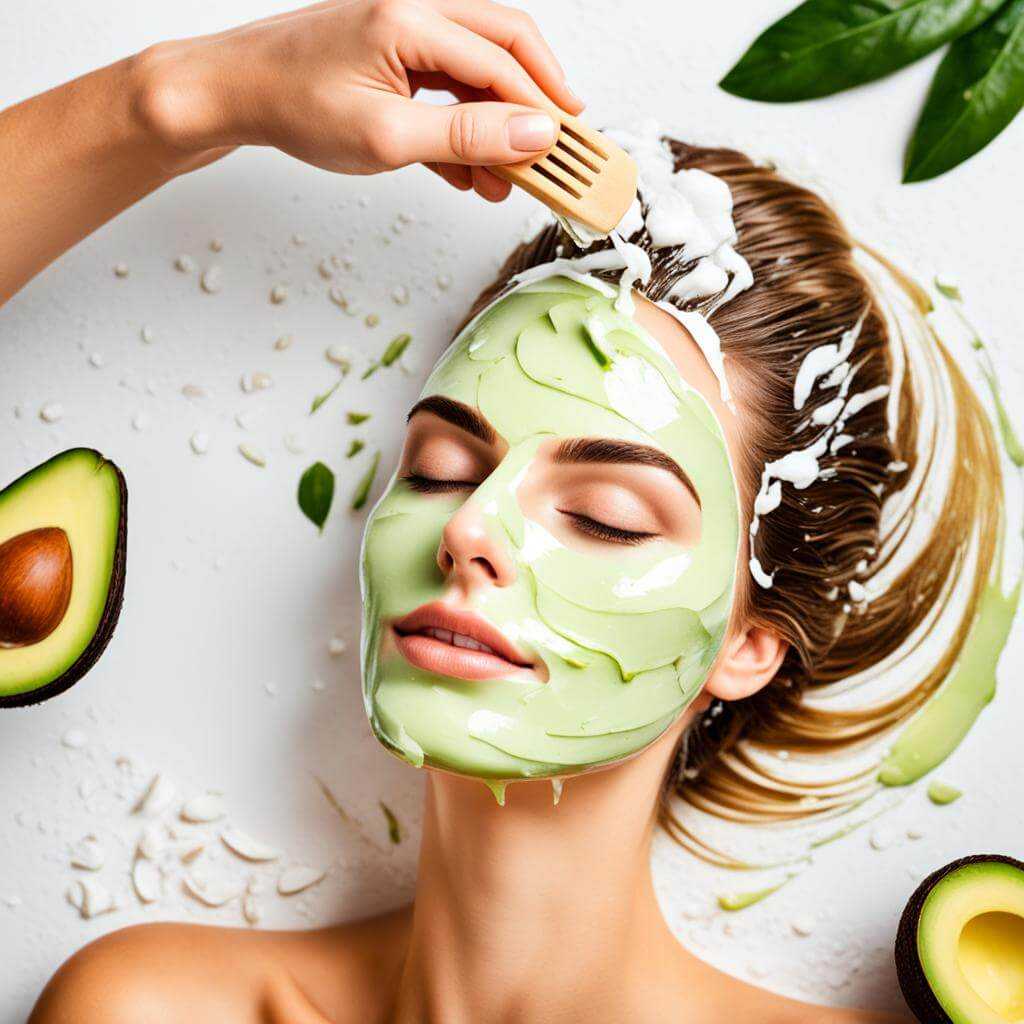
Choose a hair mask formulated specifically for chemically treated hair to maximize its effectiveness. Look for ingredients like argan oil, shea butter, and keratin, which can help restore moisture, repair damage, and improve the overall health and appearance of your hair.
Incorporating a hair mask into your hair care routine is easy. After shampooing and conditioning your hair, apply the hair mask generously from roots to ends. Leave it on for the recommended time, usually around 10-15 minutes, and then rinse thoroughly. You’ll notice softer, smoother, and more manageable hair with continued use.
Remember to give your hair time to breathe and recover between hair processing treatments. Minimizing the frequency of hair dye, hair perms, and hair relaxers will reduce the risk of damage and help maintain the health of your hair in the long run. Combine this with the regular use of a hydrating hair mask, and you’ll have a winning formula for beautiful and healthy hair.
| Benefits of Minimizing Hair Processing |
|---|
| Prevents hair damage |
| Reduces dryness and breakage |
| Allows hair to recover and regain strength |
| Improves overall hair health and appearance |
Protect Hair When Exposed to the Sun or Swimming
Sun exposure and chlorinated pools can be damaging to your hair. Luckily, there are several measures you can take to protect your locks from these potential hazards.
Applying conditioner or leave-in masks before swimming can help create a barrier between your hair and the damaging effects of chlorinated water. This added layer of protection can help retain moisture and prevent dryness and brittleness caused by prolonged exposure to the chemicals in the pool.
“Conditioner acts as a shield by coating the hair and preventing chlorine from penetrating the hair shaft,” explains hair expert Emily Jones.
Additionally, wearing a swim cap is another effective way to shield your hair from the damaging effects of chlorinated water. Swim caps create a physical barrier, keeping the chlorine-infused water away from your hair.
When spending time under the sun, consider wearing a wide-brimmed hat. This provides protection not only to your hair but also to your scalp from harmful UV rays. The hat helps to shade your hair and keeps it from direct sun exposure, minimizing the risk of drying out and fading.
Remember, prevention is key when it comes to protecting your hair from sun exposure and swimming. By following these simple steps and incorporating them into your hair care routine, you can keep your locks looking healthy and vibrant all summer long.
| Protective Measure | Effectiveness |
|---|---|
| Applying conditioner or leave-in masks before swimming | Creates a protective barrier against chlorine |
| Wearing a swim cap | Provides physical barrier against chlorinated water |
| Wearing a wide-brimmed hat | Protects hair and scalp from harmful UV rays |
Detangle Hair Before Shower and Shampoo
One of the essential steps to maintain healthy hair is detangling it before showering and shampooing. This simple practice can help prevent breakage and save you valuable time in your hair care routine.
Before stepping into the shower, take a few minutes to gently brush or finger comb your hair, starting from the ends and working your way up to the roots. This helps remove any tangles and knots, preparing your hair for a thorough cleanse without causing unnecessary damage.
By detangling your hair beforehand, you minimize the chances of excessive breakage during the washing process. Hair detangling is crucial because wet hair is more fragile and prone to breakage. Taking this proactive approach ensures that you’ll have less hair loss and fewer split ends, resulting in healthier, more manageable locks.
Additionally, detangling your hair before shampooing enables the product to distribute evenly throughout your strands. This ensures that the shampoo effectively cleanses every inch of your hair and scalp, promoting optimal breakage prevention and allowing you to enjoy the full benefits of your chosen hair care products.
Dry Hair Detangling Tips:
- Start from the ends and work your way up to the roots.
- Use a wide-toothed comb or a detangling brush with flexible bristles.
- If your hair is exceptionally prone to tangles, consider applying a leave-in conditioner or detangling spray before brushing.
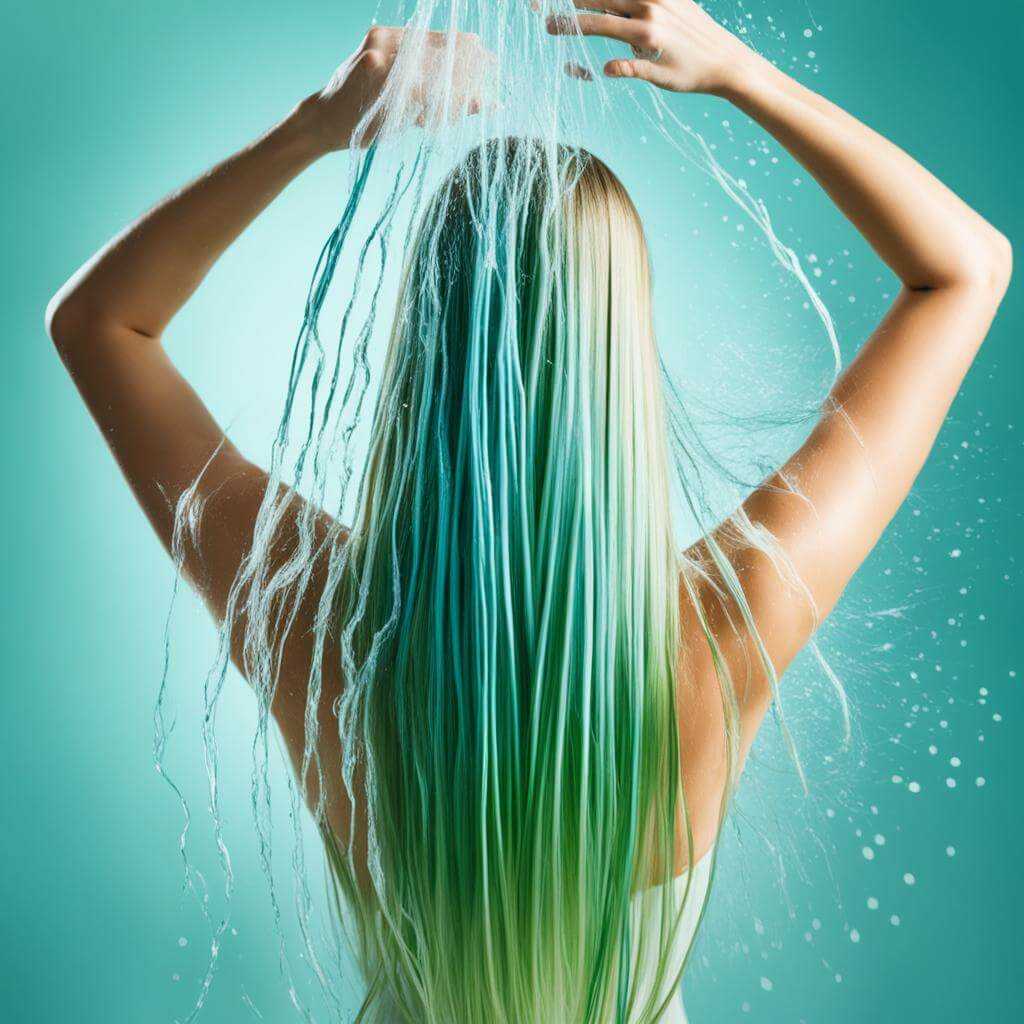
Remember, detangling your hair before showering is a simple yet effective practice that contributes to the overall health and appearance of your hair. By incorporating this step into your hair care routine, you’re taking an important step toward maintaining strong, beautiful hair.
| Benefits of Detangling Hair Before Showering: |
|---|
| Prevents breakage and hair loss |
| Allows shampoo to distribute evenly |
| Promotes better hair care product absorption |
| Improves manageability and styling |
Brush Your Hair When Dry
Brushing wet hair can lead to breakage and damage. It’s best to wait until your hair is almost or completely dry before brushing it. Wet hair is more susceptible to stretching and snapping, making it prone to breakage when brushed. If you can’t resist brushing wet hair, opt for a wide-toothed comb instead of a brush. The wider gaps between the teeth of a wide-toothed comb help to detangle the hair more gently, reducing the risk of breakage and minimizing damage. Remember, gentleness is key when brushing wet hair to keep it healthy and strong.
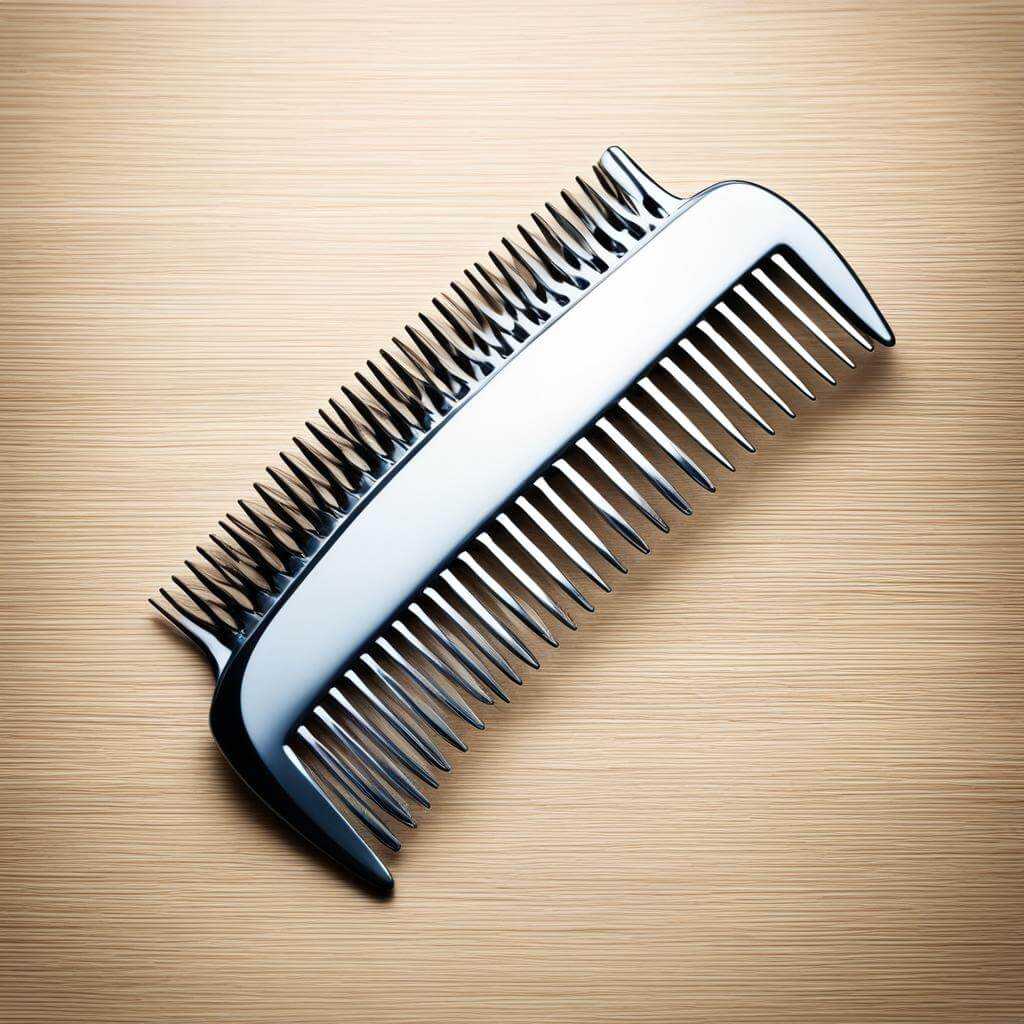
| Benefits of Brushing Dry Hair | Benefits of Using a Wide Tooth Comb |
|---|---|
| Reduces breakage | Gently detangles hair |
| Prevents damage | Minimizes hair loss |
| Preserves hair health | Smooths out knots and tangles |
Squeeze Wet Hair with a Towel
When it comes to towel drying your hair, it’s important to handle it with care to prevent breakage. The way you dry your hair can have a significant impact on its health and strength.
Rubbing your hair vigorously with a towel can cause tangles and potential breakage, as wet hair is more fragile. Instead, opt for a gentler approach by using the blotting technique to absorb excess water from your hair.
Instead of rubbing, gently squeeze and blot your hair with a towel to remove moisture. This simple change in your towel drying routine can help prevent damage and keep your hair healthy.
By gently squeezing your hair with a towel, you minimize the risk of both tangles and breakage. This method is especially effective for those with curly or textured hair, as it helps to maintain the natural curl pattern without causing frizz or disrupting the hair cuticle.
Remember, when towel drying your hair, always use a soft, absorbent towel. Rough towels or those made from materials like terrycloth can rough up the hair shaft and lead to damage.
So, the next time you step out of the shower, resist the urge to vigorously rub your hair with a towel and opt for a gentle squeeze instead. Your hair will thank you for it!
Breakage Prevention Techniques
Preventing breakage is key to maintaining the overall health and strength of your hair. In addition to using the blotting technique to towel dry your hair, here are a few more tips to help minimize breakage:
- Use a wide-toothed comb or a detangling brush to gently remove tangles from your hair.
- Avoid using heat styling tools excessively and always use a heat protectant spray before applying heat.
- Limit the use of harsh chemical treatments like hair dye, perms, and relaxers, as they can weaken the hair strands.
- Stay hydrated and maintain a healthy diet to nourish your hair from within.
- Ensure that your hair is properly moisturized by using a conditioner suitable for your hair type and applying a deep conditioning treatment regularly.
By integrating these breakage prevention techniques into your hair care routine, you can protect your hair from damage and promote its overall health and longevity.
Conclusion
Maintaining healthy hair requires certain practices and habits. By following these healthy hair tips, you can ensure that your hair remains strong, shiny, and healthy. Incorporate these tips into your daily hair care routine to achieve and maintain the best hair health possible.
Remember to wash your hair less often to maintain its natural oils and balance. Properly applying conditioner and using a hair mask weekly will provide the necessary hydration and moisture for your hair. Protect your hair from heat styling and minimize hair processing to prevent damage and dryness. Avoid sun exposure and swimming without protection to keep your hair healthy. Detangle your hair before showering and brush it when dry to prevent breakage. Lastly, squeeze wet hair with a towel instead of rubbing to avoid tangles and breakage.
By incorporating these tips into your hair care routine, you’ll be well on your way to achieving and maintaining healthy hair. With proper care and attention, you can have strong, shiny, and beautiful hair that enhances your overall appearance.
